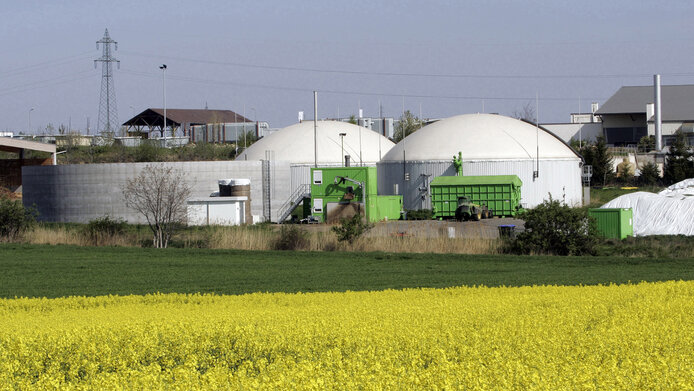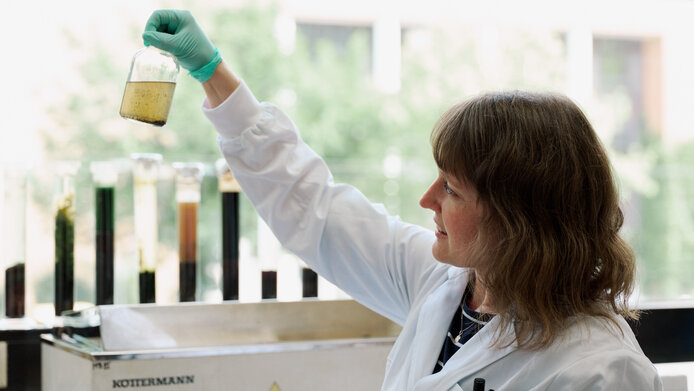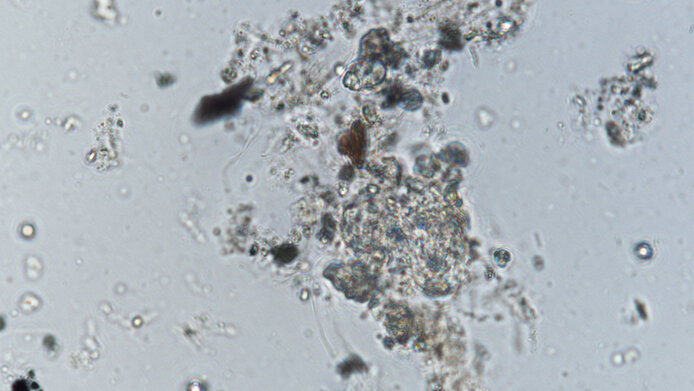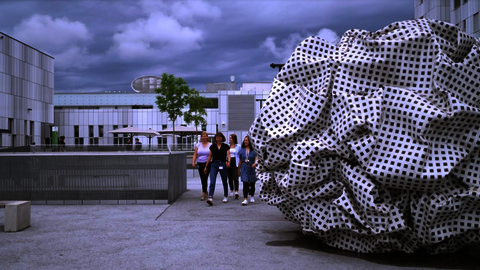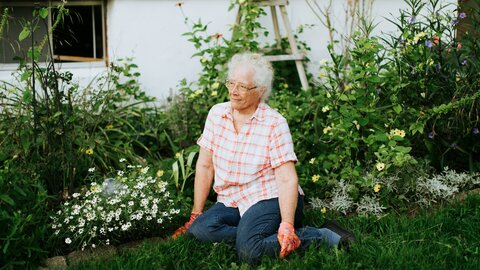Turning waste into green energy
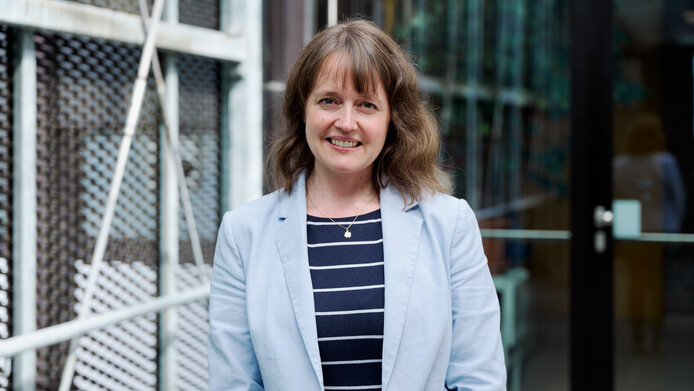
Global challenges like climate change and an increasing scarcity of resources are putting the spotlight on innovative technologies such as biogas plants and the circular economy. Biogas plants provide an environmentally friendly method of power generation by turning organic waste materials into valuable energy in a CO2-neutral way. The organic raw material captures the CO2 that is later released when the biogas (the final product) is used as fuel. This way, no additional CO2 is emitted.
Circular economy
This procedure is rooted in the idea of a circular economy. Striving for a sustainable use of resources, this concept proposes returning waste products to the production cycle instead of simply discarding them. Taken together, approaches such as the circular economy, the energy transition, and biogas production can go a long way in reducing our dependency on fossil fuels while simultaneously lowering greenhouse gas emissions.
Balancing grid fluctuations
Biogas also perfectly complements other energy sources such as wind and solar, as weather conditions have no impact on its production and storage. Biogas plants are thus a great alternative to fall back on when wind and solar energy outputs dip.
Climate-relevant basic research
The Zero Emission Awards by the alpha+ Foundation of the Austrian Science Fund (FWF) are intended to stimulate pioneering research and innovation for the energy transition. In 2025, microbiologist Eva Maria Prem received the award, which is endowed with €370,000. Her basic research project answers the question of how much potential biogas has.
Low share of biogas
In 2023, about 76 terawatt hours of gas were consumed in Austria, the bulk of which was used by the industry. Apart from that, there are also roughly 80,000 Austrian households that use gas for heating. At 0.14 terawatt hours, the biogas share was negligible. According to the list of all plant operators published by E-Control, the Austrian regulatory authority for the electricity and gas markets, a total of 349 plants fed green electricity from renewable gases into the public grid in 2024. As plant operators can also directly market their electricity without being listed by E-Control, it is estimated that there are about 395 biogas plants in Austria.
The issue with energy crops
To increase the available raw material volume, special energy crops, mostly corn due to its superior energy yield compared to other staple crops, are grown to be used in addition to waste materials. “According to a study conducted by the Austrian Institute of Economic Research and the University of Natural Resources and Life Sciences in Vienna, about 18,000 hectares of land are used to grow corn for biogas production,” Eva Maria Prem says. This puts pressure on food production as energy and food crops are competing for a limited amount of space. The use of (corn) monocultures has also been criticized for depleting the soil of nutrients and reducing biodiversity.
The failed draft law
Aiming to both foster Austria’s energy autonomy and protect the climate, the draft of the Renewable Energy Expansion Act called for an increase of the share of renewable gases (biogas, wood gas, and renewable hydrogen) to 8.34% of the total amount of gas sold in Austria by 2030. It further stipulated that the domestic demand should be entirely covered by biogas by 2040. In the National Council’s vote on the draft law in July 2024, the bill failed to secure the two-thirds majority it would have needed to pass.
“Quite a bit of room for improvement”
“According to Christoph Strasser, an expert with the environmental competence center Bioenergy and Sustainable Technologies GmbH based in Graz, Austria, the country might realistically have access to about 4 billion cubic meters of waste materials by 2050, which amounts to about 24 terawatt hours per year. At the moment, the country’s biogas plants only produce about 540 gigawatt hours. So there’s quite a bit of room for improvement,” says Prem.
The microbiologist at the University of Innsbruck explains that strong output fluctuations are partly to blame for the low biogas production levels. “There are certain disruptors in the biogas process we still do not fully understand.” And that is what her research is about. In 2025, she received the Zero Emissions Award, which is the most generously endowed privately funded grant for basic research furthering climate protection in Austria.
Zero Emissions Award
The Zero Emissions Awards, conferred annually by the alpha+ Foundation of the Austrian Science Fund (FWF), promote outstanding basic research projects that offer promising approaches to realizing a climate-neutral future. The funding scheme strives to foster insights characterized by scientific excellence and technological innovation as well as ecological effectiveness.
Obstacles in the production process
The young microbiologist says that the award is a major “motivation boost” and signal that her research is being recognized and that she is on the right track. Prem has been investigating the processes in biogas plants for some years now. And there are still plenty of challenges to be explored: contaminants in the waste materials, such as ammonium or heavy metal concentrations, make it hard for microorganisms to do their work. Prem seeks to understand the complex microbial interdependencies in biogas reactors and the resistance of microorganisms against pollutants.
Complex process
This knowledge is important to ensure uninterrupted biogas production. “Biogas is produced without oxygen. It’s an extremely complex anaerobic process. One missing microorganism group in this degradation chain is enough to stall the entire biogas process,” the scientist explains. Together with a number of colleagues, Prem has already investigated phenolic compounds that can inhibit digestion processes in an FWF-funded project lead by Andreas Wagner.
Biofilm, the perfect defense mechanism
In her current project, Prem goes even further, looking into how microorganisms react to and fend off potential pollutants such as ammonium or heavy metals. She has already discovered a defense mechanism: microorganisms form a biofilm made of polysaccharides, lipids, proteins, and nucleic acids, which covers and protects them from outside influences. And that’s not all the microfilm does for the microorganisms: it also stores nutrients and binds important partners. “Think of it like a gel that is both a source of nutrients and a protection against impurities,” the microbiologist explains.
A closer look at the biofilm
In the past, biogas research focused on the questions of how to foster the forming of this biofilm and how to effectively protect it from being flushed out of the biogas reactor. In her project, the Innsbruck-based researcher now wants to delve deeper into what these biofilms are all about. What are they made of? What inhibits the formation of a biofilm? Which microorganisms are responsible for building a biofilm? Is the microfilm only formed by certain groups of organisms? What are further strategies of microorganisms to protect themselves against pollutants?
Focusing on microbial communities
Prem is looking for answers to all of these questions by exploring mixed cultures of bacteria and archaea from four different biogas plants where different materials are digested. “The communities formed in the various reactors differ markedly from each other. I bring samples to my lab, add different substrates and pollutants, and then watch what happens,” she describes her work.
A diverse microcosm
What she sees is that none of the microscopically small communities look alike: some groups produce black flakes, while others are of a brownish color and don’t organize into any structures but still produce biogas. As different microbial communities produce varying amounts of biogas, Prem is also interested in the role these formations (flakes, for instance) play in biogas production.
Microbial communities: little black boxes
The microbiologist’s fascination with this minuscule world has never once waned. “Experts in the field regard microbial communities as black boxes because so much about how they interact is still unknown.”
Potential for biotechnologies and climate action
Prem caught the microorganism bug during her studies of Biology at the University of Innsbruck. “I am particularly devoted to anaerobic microorganisms, which – living without oxygen – have to make do with very little energy and co-exist in highly complex communities,” she marvels about her favorite research topic. Growing up in St. Johann in Tyrol with a nature-loving mother as a role model, it was no question for Prem, who is 40 today, that she wanted to study biology after graduating from a science-focused secondary school. At university, she not only developed her love of microorganisms but also a clear vision of the research field’s vast potential for biotechnology applications and innovations furthering climate protection.
It takes diversity, precision, and creativity
Prem says that her PhD advisor Andreas Wagner has had a strong influence on her academic career. She had worked as a microbiologist at a pharmaceutical company for some years following her master’s studies when he invited her to return to university and join an FWF-funded research project as a doctoral researcher. Although she considers the time she spent in the pharmaceutical industry as a very valuable experience, what she is really passionate about is her research. The freedom to let her own interests guide her in her work is something she particularly appreciates about her current job.
The same goes for the diversity it calls for. “As a microbiologist, you also have to be an expert in chemistry, bioinformatics, and – at least where fundamentals are concerned – physics,” she jokingly says. In addition to this wide range of expertise, research in this field also requires precision, integrity, and creativity. “You have to draw on your imagination to probe and maybe also push the boundaries of our understanding,” Prem emphasizes.
One of the boundaries her own research might push: increasing biogas production output through ways to better digest waste materials that are hard to break down – possibly even paired with a reduced use of energy crops.
About the researcher
Eva Maria Prem studied Biology at the University of Innsbruck. After completing the master’s program, the microbiologist worked for a pharmaceutical company for three years. She then returned to the University of Innsbruck as a doctoral student, acquiring her PhD while working for several FWF-funded research projects on anaerobic microorganisms. In June 2025, she received the Zero Emissions Award conferred by the alpha+ Foundation of the Austrian Science Fund (FWF) for her work on microorganisms and the processes they are involved in during biogas production. Every year, this award funds outstanding research projects in the field of basic research that highlight promising ways to reach a climate-friendly future. To be selected, the projects must not only be scientifically excellent and technologically innovative but also offer insights that will bring about palpable ecological effects.
